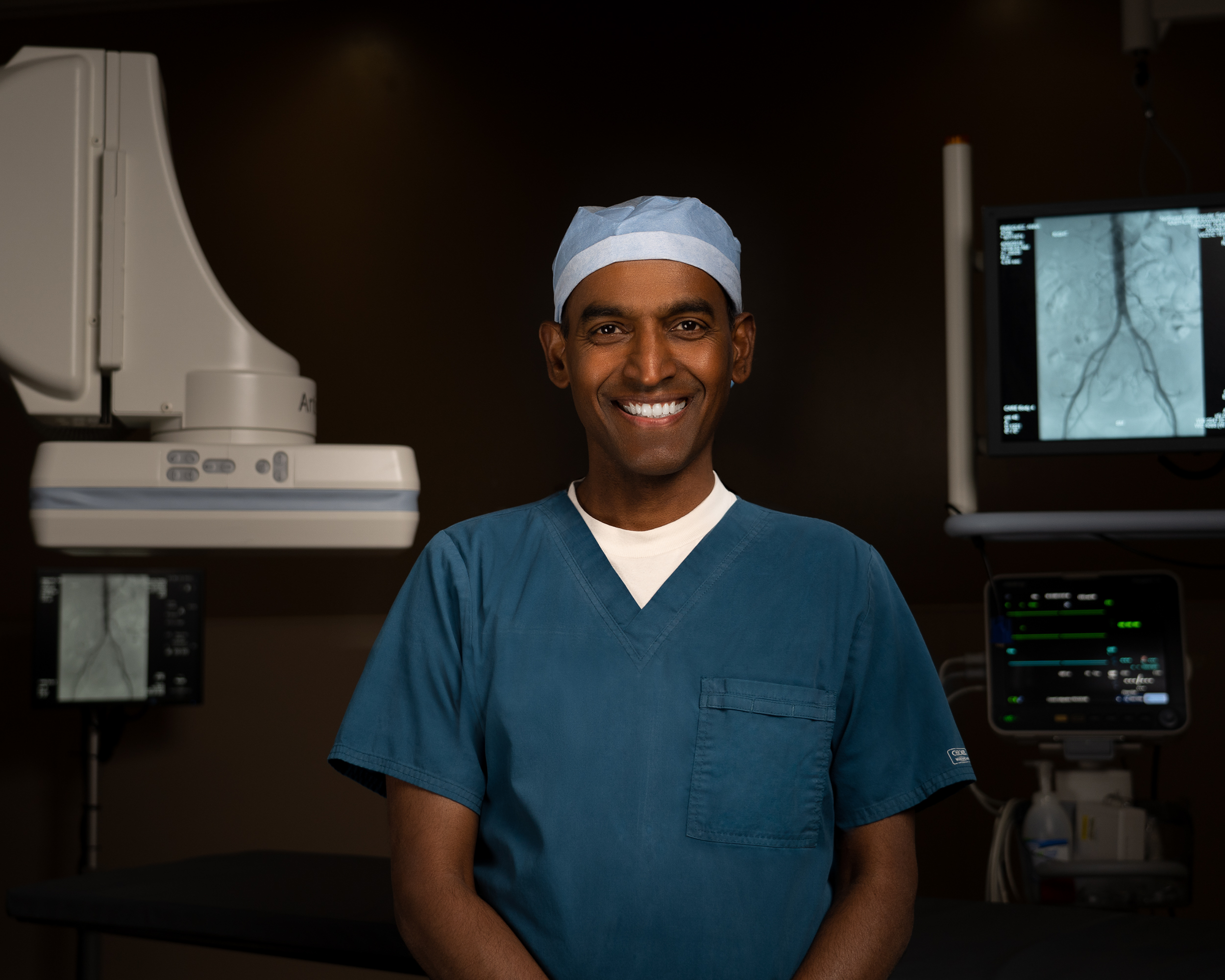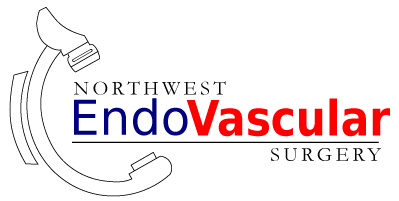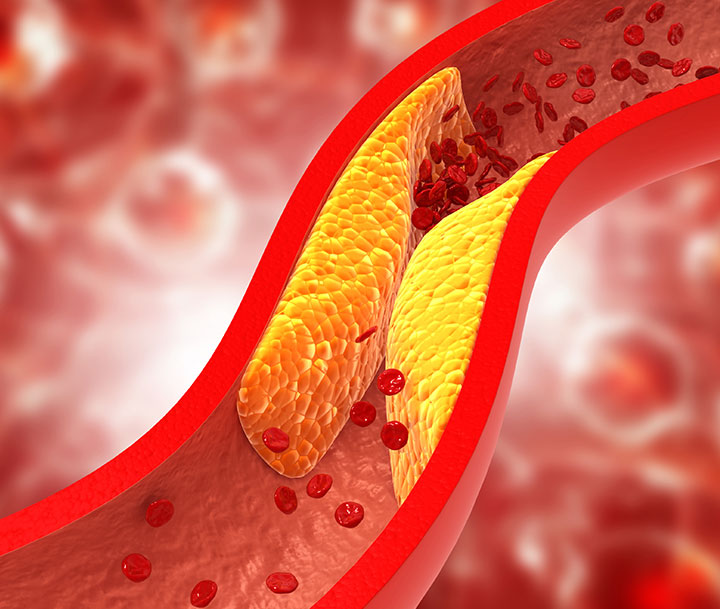Peripheral Arterial Disease
Peripheral arterial disease is when plaque builds up in the arteries that supply blood to your legs, feet, or arms, causing pain. When it is left untreated it can be very serious and can lead to gangrene or amputation. To treat this your doctor may suggest angioplasty, a minimally invasive surgery that restores blood flow through your arteries.
If you have pain in your legs when walking or have non-healing wounds on your legs or feet, you may have peripheral arterial disease. Schedule an appointment with Dr. Kasthuri for an evaluation and to discuss treatment options.
Learn More About Peripheral Arterial Diseases
What is peripheral arterial disease?
Peripheral arterial disease (PAD) is a disease caused by plaque buildup inside major arteries in the body, most often the legs. This accumulation causes your arteries to narrow, leading to symptoms like:
- Poor circulation and cold limbs
- Leg pain or cramps, especially during activity
- Tired, weak legs
- Skin color changes
- Sores or ulcers that don’t heal
The risk factors for PAD include smoking, diabetes, high cholesterol, high blood pressure, and a sedentary lifestyle. Fatty deposits accumulate and cause your arteries to narrow and harden. The narrowing arteries block blood flow and deprive your extremities of oxygen. If a clogged artery blocks oxygen to your legs, the tissues may start to die, leading to gangrene. Once gangrene sets in, you may risk amputation. PAD also increases your risk of vascular inflammation and blood clots. It’s often a sign that other arteries are clogged too, leading to coronary artery disease, heart attack, and stroke.
How is peripheral artery disease diagnosed?
How is peripheral arterial disease treated?
Dr. Kasthuri will discuss with you the best personalized treatment based for your symptoms. Early peripheral artery disease may be able to be managed with diet, exercise, and medications. If the flow to your limbs is more severely blocked, he may suggest an angiogram procedure to restore the blood flow.
He performs the minimally invasive angiogram procedure in his state licensed ambulatory surgical facility at NWES, so no hospital visit is required. During the angiogram procedure, he can often fix the blockages at that time using angioplasty (ballooning), stents (wire mesh tube to hold the blockage open), or atherectomy (device for removing plaque from the artery). The goal of the procedure is to reopen the vessels and restore blood flow to the tissues to relieve your pain and help heal your skin wounds.
If you’re looking for an endovascular surgeon in the Richland, Washington, area, contact Dr. Kasthuri online or over the phone.

Saravanan Kasthuri, MD
Northwest Endovascular Surgery
Interventional Radiologist & Endovascular Surgeon located in Benton County, Richland, WA
Your Health Starts Here
At Northwest Endovascular Surgery we are committed to your health and will be by your side every step of the way.
To schedule flexible appointments, for questions, or concerns, please request an appointment.
Or call — 509-588-7613
“My mom received great, attentive care and we will gladly return for follow up care and any other procedures necessary in the journey of stage 4 breast cancer.”
-Lisa E.



